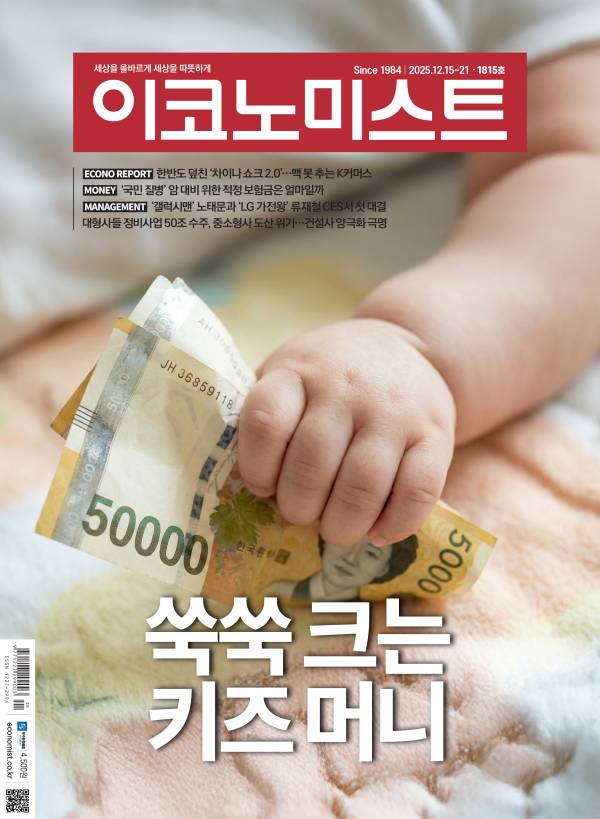- ‘가난’ 남의 일 아니다

YOU’RE PROBABLY GOING TO BE POOR
60 percent of people between 25 and 60 will fall into poverty in their lifetime.College undergraduates — even those headed into lucrative fields like computer engineering, consulting and finance — often live in mortal anxiety over the possibility of being poor. According to a study published this week, their fears might be well founded. Around 60 percent of people between 25 and 60 will fall into the 20th percentile of incomes at some point in their lifetime, while 40 percent will dip below the 10th percentile line, according to Mark Rank, a professor of social welfare at the University of Washington, St. Louis.
The findings suggest that for many Americans, a steady income and a stable career trajectory are not necessarily the norm. Using data from households collected between 1968 and 2011, Rank finds that over the course of a lifetime, Americans’ economic situations can shift drastically. In a previous study published in his book Chasing the American Dream, Rank found that a striking 54 percent of Americans at one point fell below the U.S. poverty line.
“Taken together,” Rank said in a Washington University press release, “These findings indicate that across the American life course there is a large amount of income volatility.” In other words, when it comes to going through hard times, the question may not be “if,” but rather “for how long?” While 60 percent of people will experience poverty for at least a year, the new study says, around 25 percent are likely to experience five or more years of poverty, while about 12 percent are likely to go through five years of extreme poverty.
“Poverty is often thought of as a ‘them’ issue,” says Rank. “What these findings indicate is that poverty is an ‘us’ issue. It’s something that many of us, not just some, should be concerned about.”
The study, conducted in conjunction with Cornell sociology professor Thomas A. Hirschl, used data from the Panel Study of Income Dynamics, a long-term survey that began in 1968. The PSID is one of the few compilations of poverty statistics that aggregates data over decades. In contrast, the Census Bureau’s poverty statistics only capture “snapshots,” taken for a single year.
“The official measures of poverty,” says Columbia urban studies professor Irwin Garfinkel, “are really problematic.”
Rank’s study defines poverty relatively, rather than using the standard of the U.S. poverty line. The national line is based on a minimum threshold for living conditions, but someone above the line could still be considered “poor.” The line, Rank’s study notes, has remained fixed since it was instituted in 1964, in spite of the fact that income inequality has increased.
Garfinkel contends that increasing income inequality is a defining modern economic trend. “We’ve destroyed the unions, and we’ve allowed the minimum wage to erode,” he says. “I would characterize the last 40 years as a period of near class warfare, waged from the top against the bottom.”
Rank says that the high chances of experiencing poverty should incentivize Americans to maintain safety nets and pay standards such as the minimum wage. “We don’t know what the future is going to be,” says Rank, “But these findings come from actual data on what has happened to people [from 1968 to 2011]; it is not an extrapolation.”
To that end, Rank is currently researching a “Risk Calculator.” In the next few months, he hopes to develop an algorithm that will be able to estimate the likelihood that someone will become poor, based on factors like age, career and geographic location.
According to David Grusky, the head of the Center on Poverty and Inequality at Stanford University, “The research [in Rank’s study] makes it clear that we live in a volatile economy in which large swaths of the population are exposed to risk.”
So what should the paranoid college senior do to prepare for a life of income instability? Rank’s numbers show that facing uncertainty should be expected. “When you think about many years of a lifetime, a lot of things occur to people that they did not think were going to occur.”
‘가난’ 남의 일 아니다
25∼60세 미국인의 약 60%는 생애 어느 시점에선가 빈곤 경험할 수 있어컴퓨터공학, 컨설팅, 금융 등 높은 소득이 보장되는 부문에서 직장을 얻는 대졸자도 언제든 빈곤의 늪에 빠질지 모른다는 불안감을 갖는 경우가 많다. 최근 발표된 연구에 따르면 근거 있는 두려움이다. 워싱턴대학(세인트루이스 캠퍼스) 사회복지과 교수 마크 랭크에 따르면 25∼60세 미국인의 약 60%는 생애의 어느 시점에선가 소득 하위 20백분위, 40%는 소득 하위 10백분위 아래로 떨어진다.
이 결과는 미국인 다수에게 안정된 소득과 경력이 반드시 보장되는 건 아니라는 점을 시사한다. 랭크 교수는 1968∼2011년 수집된 가계 데이터를 이용해 미국인의 경제적 상황이 일생 동안 급격히 바뀔 수 있다는 사실을 발견했다. 그는 저서 ‘아메리칸 드림 좇기’에 인용된 연구 결과에서 미국인의 54%가 어느 시점에선 빈곤선 아래로 떨어진다는 사실을 확인했다.
랭크 교수는 “이런 결과를 종합해 보면 미국인의 일생 동안 소득 변동성이 아주 크다는 점을 알 수 있다”고 말했다. 새 연구에 따르면 미국인의 60%는 최소한 1년 동안 빈곤을 경험하며, 약 25%는 그 기간이 5년 이상 지속되고, 약 12%는 극단적인 빈곤을 5년 이상 겪을 가능성이 크다.
랭크 교수는 “사람들은 빈곤을 자신의 문제라고 생각하지 않는 경우가 많다”고 말했다. “그러나 이번 연구는 빈곤이 ‘우리의 문제’라는 점을 시사한다. 우리 중 소수가 아니라 다수가 우려해야 하는 문제라는 뜻이다.”
랭크 교수가 코넬대학 사회학 교수 토머스 A 허슐과 공동으로 실시한 이 연구는 1968년 시작된 장기적인 소득 조사의 데이터를 사용했다. 수십 년에 걸쳐 누적된 빈곤 통계를 말한다. 그에 비해 미국 인구조사국의 빈곤 통계는 단일 연도의 일면만 보여줄 뿐이다. 컬럼비아대학 도시학 교수 어윈 가핑클은 “공식적인 빈곤 통계는 문제가 아주 많다”고 말했다.
랭크 교수는 이번 연구에서 공식 빈곤선 기준 대신 빈곤을 상대적으로 정의했다. 국가 공식 빈곤선은 생활조건의 최소 한계를 바탕으로 한다. 하지만 그 선 위에 있는 사람도 ‘빈곤하다’고 볼 수 있다. 랭크 교수의 연구에 따르면 그 선은 소득 불평등의 심화에도 1964년 설정된 이래 계속 고정된 상태다.
가핑클 교수는 소득 불평등 심화가 현대 경제의 중요한 추세라고 지적했다. “노조와 최저임금이 와해됐다. 지난 40년은 부유층이 빈곤층을 상대로한 계급투쟁의 시기였다고 해도 과언이 아니다.”
랭크 교수는 대다수 미국인이 빈곤을 경험할 가능성이 크다는 사실을 감안해 사회안전망과 최저임금 같은 급여 기준을 유지할 필요가 있다고 말했다. “미래가 어떻게 될지 모르지만 이 결과는 1968∼2011년 실제로 사람들이 겪은 데이터를 바탕으로 했다. 추정이 아니다.”
랭크 교수는 현재 ‘리스크 계산기’를 연구 중이다. 나이, 경력, 지리적 위치 등의 요인을 바탕으로 개인이 빈곤에 빠질 가능성을 추정할 수 있는 앨고리즘이 몇 달 안에 개발될 수 있을 것으로 그는 기대한다.
스탠퍼드대학의 빈곤·불평등센터 소장인 데이비드 그러스키는 “이번 연구 결과는 미국인이 매우 불안한 경제에서 살고 있다는 점을 여실히 보여준다”고 말했다. “인구의 많은 부분이 빈곤 위험에 노출돼 있다는 사실 말이다.”
그렇다면 대학 졸업반 학생들은 소득 불안정의 삶에 어떻게 대비해야 할까? 뾰족한 수가 없다. 랭크 교수의 연구 결과는 불확실성이 크다는 사실을 말해준다. “일생 동안 사람들에겐 생각지도 않았던 일이 많이 일어난다.”
- JACK MARTINEZ NEWSWEEK 기자 / 번역 이원기
ⓒ이코노미스트(https://economist.co.kr) '내일을 위한 경제뉴스 이코노미스트' 무단 전재 및 재배포 금지










![갓 잡은 갈치를 입속에... 현대판 ‘나는 자연인이다’ 준아 [김지혜의 ★튜브]](https://image.isplus.com/data/isp/image/2025/11/21/isp20251121000010.400.0.jpg)
![딱 1분… 숏폼 드라마계 다크호스 ‘야자캠프’를 아시나요 [김지혜의 ★튜브]](https://image.isplus.com/data/isp/image/2025/11/09/isp20251109000035.400.0.jpg)



당신이 좋아할 만한 기사
브랜드 미디어
브랜드 미디어
미국 출장 마친 삼성 이재용…"열심히 일하고 왔다"
세상을 올바르게,세상을 따뜻하게이데일리
일간스포츠
이데일리
장원영, 블랙 드레스로 완성 우아한 매력
대한민국 스포츠·연예의 살아있는 역사 일간스포츠일간스포츠
일간스포츠
일간스포츠
테슬라의 자신감…주행 데이터 '오픈' 한다[only 이데일리]
세상을 올바르게,세상을 따뜻하게이데일리
이데일리
이데일리
불닭볶음면이 만든 1조 매출…삼양식품 신용등급도 상승세
성공 투자의 동반자마켓인
마켓인
마켓인
팜이데일리 유망바이오 톱10 주가 상승률, 헬스케어지수 대비 25%p↑
바이오 성공 투자, 1%를 위한 길라잡이팜이데일리
팜이데일리
팜이데일리